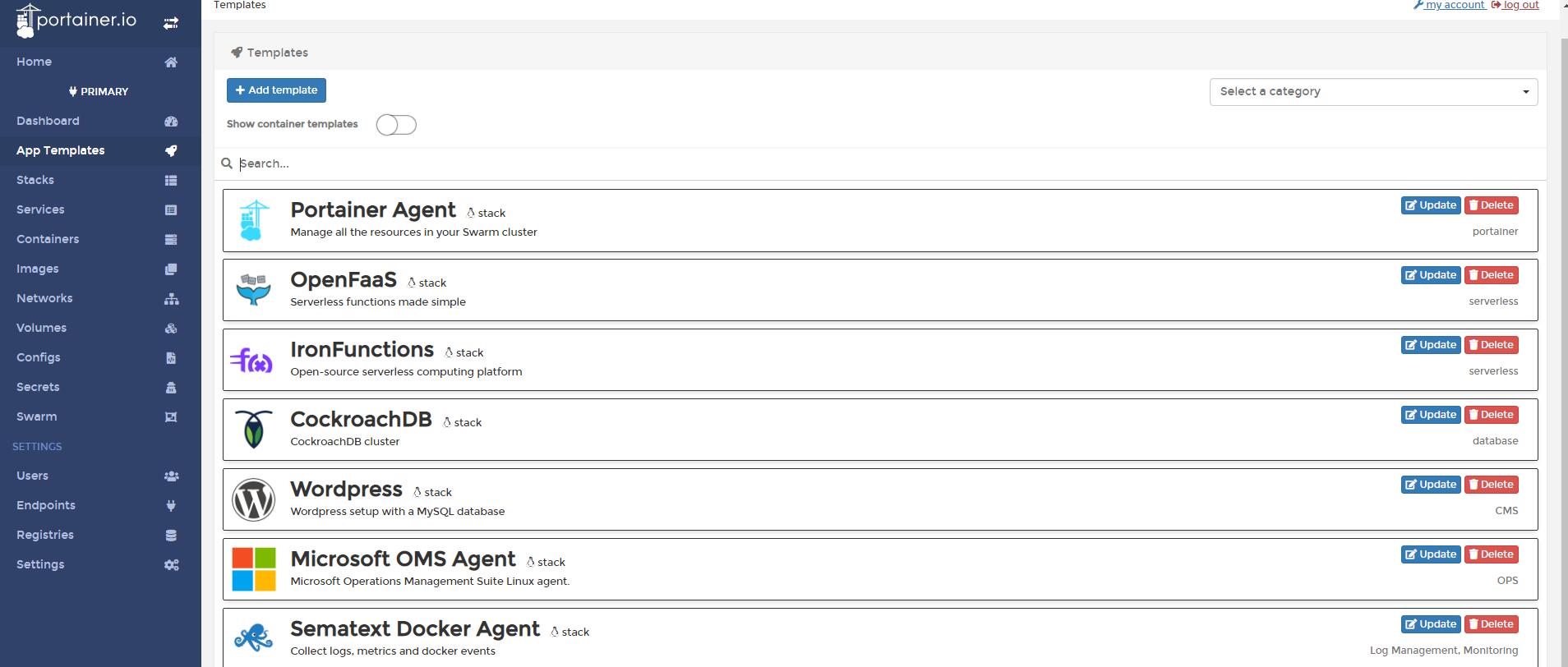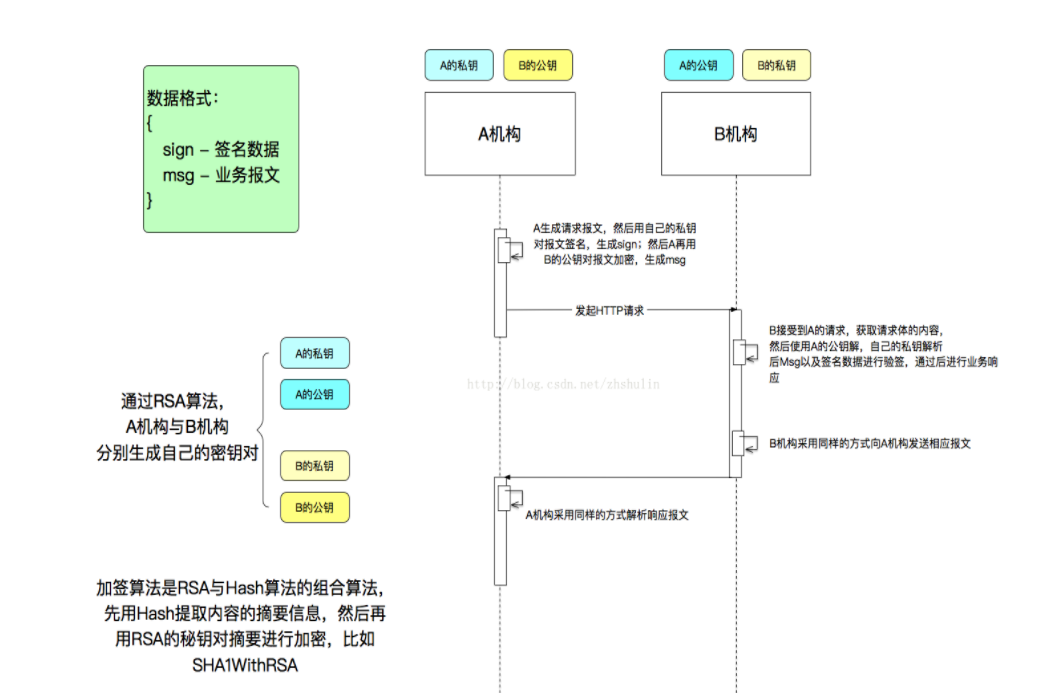可以将文章内容翻译成中文,广告屏蔽插件可能会导致该功能失效(如失效,请关闭广告屏蔽插件后再试):
问题:
I am using camera intent to capture images in my App. The problem my app crashes on Android 5.0.2 while using camera. I am using intent from fragment. Below is my code inside fragment:
Method to take photo
private void takePhoto() {
mHighQualityImageUri = Util.generateTimeStampPhotoFileUri(getActivity());
Log.d(UploadPicturesFragment.class.getSimpleName(),
"URI: " + mHighQualityImageUri.toString());
Intent intent = new Intent(MediaStore.ACTION_IMAGE_CAPTURE);
intent.putExtra(MediaStore.EXTRA_OUTPUT, mHighQualityImageUri);
startActivityForResult(intent, REQUEST_IMAGE_CAPTURE);
}
onActivityResult in my fragment
public void onActivityResult(int requestCode, int resultCode, Intent data) {
if (resultCode != Activity.RESULT_OK) {
return;
}
if (requestCode == REQUEST_IMAGE_CAPTURE) {
Log.d(UploadPicturesFragment.class.getSimpleName(),
"IMAGE URI NOT NULL: " + (mHighQualityImageUri == null));
try {
Bitmap bitmap = MediaStore.Images.Media.getBitmap(getActivity().getContentResolver(),
mHighQualityImageUri);
DroomUtil.beginCrop(mHighQualityImageUri, getActivity(), this, true, bitmap.getWidth(),
bitmap.getHeight());
} catch (FileNotFoundException e) {
e.printStackTrace();
} catch (IOException e) {
e.printStackTrace();
}
}
}
Log Trace
12-29 10:28:03.491: E/AndroidRuntime(9780): java.lang.RuntimeException: Unable to resume activity {in.droom/in.droom.activity.MainActivity}: java.lang.RuntimeException: Failure delivering result ResultInfo{who=android:fragment:2, request=1, result=-1, data=null} to activity {in.droom/in.droom.activity.MainActivity}: java.lang.NullPointerException: Attempt to invoke virtual method 'java.lang.String android.net.Uri.getScheme()' on a null object reference
12-29 10:28:03.491: E/AndroidRuntime(9780): at android.app.ActivityThread.performResumeActivity(ActivityThread.java:3224)
12-29 10:28:03.491: E/AndroidRuntime(9780): at android.app.ActivityThread.handleResumeActivity(ActivityThread.java:3257)
12-29 10:28:03.491: E/AndroidRuntime(9780): at android.app.ActivityThread.handleLaunchActivity(ActivityThread.java:2479)
12-29 10:28:03.491: E/AndroidRuntime(9780): at android.app.ActivityThread.access$800(ActivityThread.java:144)
12-29 10:28:03.491: E/AndroidRuntime(9780): at android.app.ActivityThread$H.handleMessage(ActivityThread.java:1359)
12-29 10:28:03.491: E/AndroidRuntime(9780): at android.os.Handler.dispatchMessage(Handler.java:102)
12-29 10:28:03.491: E/AndroidRuntime(9780): at android.os.Looper.loop(Looper.java:155)
12-29 10:28:03.491: E/AndroidRuntime(9780): at android.app.ActivityThread.main(ActivityThread.java:5702)
12-29 10:28:03.491: E/AndroidRuntime(9780): at java.lang.reflect.Method.invoke(Native Method)
12-29 10:28:03.491: E/AndroidRuntime(9780): at java.lang.reflect.Method.invoke(Method.java:372)
12-29 10:28:03.491: E/AndroidRuntime(9780): at com.android.internal.os.ZygoteInit$MethodAndArgsCaller.run(ZygoteInit.java:1029)
12-29 10:28:03.491: E/AndroidRuntime(9780): at com.android.internal.os.ZygoteInit.main(ZygoteInit.java:824)
12-29 10:28:03.491: E/AndroidRuntime(9780): Caused by: java.lang.RuntimeException: Failure delivering result ResultInfo{who=android:fragment:2, request=1, result=-1, data=null} to activity {in.droom/in.droom.activity.MainActivity}: java.lang.NullPointerException: Attempt to invoke virtual method 'java.lang.String android.net.Uri.getScheme()' on a null object reference
12-29 10:28:03.491: E/AndroidRuntime(9780): at android.app.ActivityThread.deliverResults(ActivityThread.java:3881)
12-29 10:28:03.491: E/AndroidRuntime(9780): at android.app.ActivityThread.performResumeActivity(ActivityThread.java:3197)
12-29 10:28:03.491: E/AndroidRuntime(9780): ... 11 more
12-29 10:28:03.491: E/AndroidRuntime(9780): Caused by: java.lang.NullPointerException: Attempt to invoke virtual method 'java.lang.String android.net.Uri.getScheme()' on a null object reference
12-29 10:28:03.491: E/AndroidRuntime(9780): at android.content.ContentResolver.openInputStream(ContentResolver.java:651)
12-29 10:28:03.491: E/AndroidRuntime(9780): at android.provider.MediaStore$Images$Media.getBitmap(MediaStore.java:1019)
12-29 10:28:03.491: E/AndroidRuntime(9780): at in.droom.fragments.UploadPicturesFragment.onActivityResult(UploadPicturesFragment.java:395)
12-29 10:28:03.491: E/AndroidRuntime(9780): at android.app.Activity.dispatchActivityResult(Activity.java:6164)
12-29 10:28:03.491: E/AndroidRuntime(9780): at android.app.ActivityThread.deliverResults(ActivityThread.java:3877)
12-29 10:28:03.491: E/AndroidRuntime(9780): ... 12 more
The line no. 395 is:
Bitmap bitmap = MediaStore.Images.Media.getBitmap(getActivity().getContentResolver(),
mHighQualityImageUri);
回答1:
Caused by: java.lang.NullPointerException: Attempt to invoke virtual method 'java.lang.String android.net.Uri.getScheme()' on a null object reference
That means mHighQualityImageUri is null, in all likelihood. This will occur if you failed to hold onto that Uri using onSaveInstanceState(). It is entirely possible that your process will be terminated while your app is in the background and the camera app is in the foreground.
回答2:
Follow below steps in order to take picture from camera and display onto ImageView
1) Start Camera Intent
Uri fileUri;
String photoPath = "";
private void startingCameraIntent()
{
String fileName = System.currentTimeMillis()+".jpg";
ContentValues values = new ContentValues();
values.put(MediaStore.Images.Media.TITLE, fileName);
fileUri = getContentResolver().insert(MediaStore.Images.Media.EXTERNAL_CONTENT_URI, values);
Intent intent = new Intent(MediaStore.ACTION_IMAGE_CAPTURE);
intent.putExtra(MediaStore.EXTRA_OUTPUT, fileUri);
startActivityForResult(intent, YOUR_REQ_CODE);
}
2) Callback onActivityResult Function
@Override
public void onActivityResult(int requestCode, int resultCode, Intent data)
{
if (resultCode == Activity.RESULT_OK)
{
try
{
photoPath = getPath(fileUri);
System.out.println("Image Path : " + photoPath);
Bitmap b = decodeUri(fileUri);
your_image_view.setImageBitmap(b);
}
catch(Exception e)
{
e.printStackTrace();
}
}
}
3) decodeUri Function
private Bitmap decodeUri(Uri selectedImage) throws FileNotFoundException
{
BitmapFactory.Options o = new BitmapFactory.Options();
o.inJustDecodeBounds = true;
BitmapFactory.decodeStream(getContentResolver()
.openInputStream(selectedImage), null, o);
final int REQUIRED_SIZE = 72;
int width_tmp = o.outWidth, height_tmp = o.outHeight;
int scale = 1;
while (true)
{
if (width_tmp / 2 < REQUIRED_SIZE || height_tmp / 2 < REQUIRED_SIZE)
{
break;
}
width_tmp /= 2;
height_tmp /= 2;
scale *= 2;
}
BitmapFactory.Options o2 = new BitmapFactory.Options();
o2.inSampleSize = scale;
Bitmap bitmap = BitmapFactory.decodeStream(getContentResolver()
.openInputStream(selectedImage), null, o2);
return bitmap;
}
4) getPath of Image
@SuppressWarnings("deprecation")
private String getPath(Uri selectedImaeUri)
{
String[] projection = { MediaStore.Images.Media.DATA };
Cursor cursor = managedQuery(selectedImaeUri, projection, null, null,
null);
if (cursor != null)
{
cursor.moveToFirst();
int columnIndex = cursor.getColumnIndexOrThrow(MediaStore.Images.Media.DATA);
return cursor.getString(columnIndex);
}
return selectedImaeUri.getPath();
}
Finally In Manifest define permission
<uses-permission android:name="android.permission.WRITE_EXTERNAL_STORAGE"/>
Note: If you are using marshmallow (Android 6.0) you have to set Permission checks before using camera app. You can read about Android Requesting Permissions at Run Time
回答3:
First of all check if data is null in onActivityResult by adding an additional code which will prevent your app from being crashed, like this
public void onActivityResult(int requestCode, int resultCode, Intent data) {
if (resultCode != Activity.RESULT_OK && data !=null) {
return;
}
}
Then Consider This lesson Which explains how to capture photos using an existing camera application.
There is a complete reference about Requesting camera permission using uses-feature tag , Getting a thumbnail, Saving full size photo, And many more which may be very helpful to you for accomplishing your Task ...
回答4:
please check your path from mHighQualityImageUri because output path is not found, below code is modify please check it, it work and remember camera result is give in Main Activity class because You used Fragment so declare on activity Result in Main Activity (Fragment Activity) class.
//on Fragment Class
private void takePhoto() {
/* mHighQualityImageUri = Util.generateTimeStampPhotoFileUri(getActivity());
Log.d(UploadPicturesFragment.class.getSimpleName(),
"URI: " + mHighQualityImageUri.toString());*/
imageUri =Uri.fromFile(new File("/sdcard/"));
Intent intent = new Intent(MediaStore.ACTION_IMAGE_CAPTURE);
intent.putExtra(MediaStore.EXTRA_OUTPUT, imageUri);
context.startActivityForResult(intent, REQUEST_IMAGE_CAPTURE);
}
//on Main Activity Class
@Override
protected void onActivityResult(int requestCode, int resultCode, Intent data) {
if (requestCode == 1) {
/* Log.d(UploadPicturesFragment.class.getSimpleName(),
"IMAGE URI NOT NULL: " + (mHighQualityImageUri == null));*/
try {
/*if(imageUri==null){
Log.i("Bitmap", "Image URI Null");
}else {
Log.i("Bitmap","Image URI is not Null");
}*/
Uri imageUri = Uri.fromFile(new File("/sdcard/"));
Bitmap bitmap = MediaStore.Images.Media.getBitmap(getContentResolver(),imageUri);
// mHighQualityImageUri);
if(bitmap !=null)
{
Log.i("Bitmap", "Bitmap not Null");
}else {
Log.i("Bitmap","Bitmap is Null");
}
// DroomUtil.beginCrop(mHighQualityImageUri, getActivity(), this, true, bitmap.getWidth(),
// bitmap.getHeight());
} catch (FileNotFoundException e) {
e.printStackTrace();
} catch (IOException e) {
e.printStackTrace();
}
}
super.onActivityResult(requestCode, resultCode, data);
}
回答5:
On android, I have seen different devices exibit different behaviour for choosing image with camera and gallery. I find the better way is to:
- Create a content provider in your app.
- Get a Uri from your content provider and pass it to camera intent.
- The camera will write the captured image to your Uri.
- Read it using context.getContentResolver().openInputStream().
This method make your code independent of the returned Uri in intent since you own the Uri. Also, this supports gallery image pick too with small modifications.
I see you have device orientation issues too with camera. This (unfortunately) needs to be processed in your app one you acquire the image in a post processing step. I have outlined the code for it below as well. Mostly, orientation issues happened on Samsung devices where camera only captured images in landscape mode.
Creating Uri for image:
string imageId = "IMG" + System.currentTimeMillis();
Uri attachmentUri = Uri.parse("content://"+ AttachmentContentProvider.AUTHORITY + "/images/" + imageId);
// Store this as a member in your activity/fragment as mAttachmentUri
Note : Its important that you persist mAttachmentUri using shared preferences or activity bundle using onSaveInstanceState() otherwise the Uri may be lost when your app gets killed.
Getting the camera intent:
public static Intent getImageCaptureIntent(Context context, Uri outputFileUri)
{
Intent cameraIntent = new Intent(MediaStore.ACTION_IMAGE_CAPTURE);
cameraIntent.putExtra(MediaStore.EXTRA_OUTPUT, outputFileUri);
return cameraIntent;
}
Reading the image:
@Override
public void onActivityResult(int requestCode, int resultCode, Intent data)
{
if (resultCode != Activity.RESULT_OK) {
return;
}
if (requestCode == REQUEST_IMAGE_CAPTURE)
{
try {
Bitmap bitmap = decodeSampledBitmapFromResource(getActivity(), mAttachmentUri, Config.RGB_565);
} catch (FileNotFoundException e) {
e.printStackTrace();
} catch (IOException e) {
e.printStackTrace();
}
}
}
public static Bitmap decodeSampledBitmapFromResource(Context context, Uri uri, Config config)
{
Bitmap bmp = null;
InputStream is = null;
if (uri != null)
{
try
{
is = context.getContentResolver().openInputStream(uri);
boolean resize = true;
// First decode with inJustDecodeBounds=true to check dimensions
BitmapFactory.Options options = new BitmapFactory.Options();
options.inJustDecodeBounds = true;
BitmapFactory.decodeStream(is, null, options);
mLogger.d("Image Original Width:" + options.outWidth + " Height:" + options.outHeight );
// close and open the stream again
is.close();
is = context.getContentResolver().openInputStream(uri);
int reqWidth = options.outWidth;
int reqHeight = options.outHeight;
// Decode bitmap with inSampleSize set
options.inJustDecodeBounds = false;
options.inPreferredConfig = config;
bmp = BitmapFactory.decodeStream(is, null, options);
if(bmp != null)
{
bmp = correctImageRotation(context, bmp, uri);
}
else
{
mLogger.e("BitmapFactory.decodeStream returned null bitmap , skip correctImageRotation");
}
}
catch (FileNotFoundException fnfex)
{
mLogger.e("FileNotFoundException : while decoding inline image bitmap: " + fnfex.getMessage());
}
catch (IOException ioex)
{
mLogger.e("IOException : while decoding inline image bitmap: " + ioex.getMessage());
}
catch (OutOfMemoryError e)
{
mLogger.e("OutOfMemoryError : in decodeSampledBitmapFromResource BitmapFactory.decodeStream . Skip loading Resource");
}
finally
{
try
{
if (is != null)
{
is.close();
}
}
catch (IOException ioex2)
{
mLogger.e("IOException2 : while decoding inline image bitmap: " + ioex2.getMessage());
}
}
}
return bmp;
}
// Seemed necessary on a lot of Samsung devices
public static Bitmap correctImageRotation( Context context, Bitmap bitmap , Uri inputUri ) throws FileNotFoundException
{
int orientation = ExifInterface.ORIENTATION_UNDEFINED;
try
{
String appfilesDir = context.getApplicationContext().getFilesDir().getAbsolutePath();
String attachmentDirPath = appfilesDir + ('/') + "images");
String fileName = ContentUris.parseId(uri) + ".jpg";
String absolutePath = attachmentDirPath + ('/') + fileName;
ExifInterface exif = new ExifInterface(path);
orientation = exif.getAttributeInt(ExifInterface.TAG_ORIENTATION, ExifInterface.ORIENTATION_UNDEFINED);
}
catch (IOException e)
{
}
return rotateBitmap(bitmap, orientation);
}
/**
* rotate bitmap code reference:
* http://stackoverflow.com/questions/20478765/how-to-get-the-correct-orientation-of-the-image-selected-from-the-default-image
*/
private static Bitmap rotateBitmap(Bitmap bitmap, int orientation)
{
Matrix matrix = new Matrix();
switch (orientation)
{
case ExifInterface.ORIENTATION_FLIP_HORIZONTAL:
matrix.setScale(-1, 1);
break;
case ExifInterface.ORIENTATION_ROTATE_180:
matrix.setRotate(180);
break;
case ExifInterface.ORIENTATION_FLIP_VERTICAL:
matrix.setRotate(180);
matrix.postScale(-1, 1);
break;
case ExifInterface.ORIENTATION_TRANSPOSE:
matrix.setRotate(90);
matrix.postScale(-1, 1);
break;
case ExifInterface.ORIENTATION_ROTATE_90:
matrix.setRotate(90);
break;
case ExifInterface.ORIENTATION_TRANSVERSE:
matrix.setRotate(-90);
matrix.postScale(-1, 1);
break;
case ExifInterface.ORIENTATION_ROTATE_270:
matrix.setRotate(-90);
break;
case ExifInterface.ORIENTATION_NORMAL:
case ExifInterface.ORIENTATION_UNDEFINED:
default:
return bitmap;
}
try
{
Bitmap bmRotated = Bitmap.createBitmap(bitmap, 0, 0, bitmap.getWidth(), bitmap.getHeight(), matrix, true);
bitmap.recycle();
return bmRotated;
}
catch (OutOfMemoryError e)
{
mLogger.e("OutOfMemoryError occured while rotating the image");
return bitmap;
}
}
Content provider:
For the content provider implementation, you can use a android's FileProvider or implement a content provider like below. This content provider will open a file in your apps container for the camera app to write to.
public class AttachmentContentProvider extends ContentProvider
{
public static final String AUTHORITY = "com.yourcompany.yourapp.AttachmentContentProvider";
public static final int ENTITY_ATTACHMENT = 1;
public static final int ENTITY_ATTACHMENT_ID = 2;
private static final UriMatcher sUriMatcher;
static
{
sUriMatcher = new UriMatcher(UriMatcher.NO_MATCH);
sUriMatcher.addURI(AUTHORITY, "images", ENTITY_ATTACHMENT);
sUriMatcher.addURI(AUTHORITY, "images"+"/#", ENTITY_ATTACHMENT_ID);
}
@Override
public boolean onCreate()
{
return true;
}
@Override
public int delete(Uri uri, String where, String[] whereArgs)
{
return 0;
}
@Override
public String getType(Uri uri)
{
int match = sUriMatcher.match(uri);
switch (match)
{
case ENTITY_ATTACHMENT:
case ENTITY_ATTACHMENT_ID:
return "image/jpeg";
default:
return null;
}
}
@Override
public Uri insert(Uri uri, ContentValues initialValues)
{
return null;
}
@Override
public Cursor query(Uri uri, String[] projection, String selection, String[] selectionArgs, String sortOrder)
{
return null;
}
@Override
public int update(Uri uri, ContentValues values, String where, String[] whereArgs)
{
return 0;
}
public static File getAttachmentFile(String fileName)
{
String appfilesDir = context.getApplicationContext().getFilesDir().getAbsolutePath();
String attachmentDirPath = appfilesDir + ('/') + "images");
File newFile = new File(AttachmentHelper.getAttachmentsDir() + File.separator + fileName);
newFile.getParentFile().mkdirs();
return newFile;
}
@Override
public ParcelFileDescriptor openFile(Uri uri, String mode) throws FileNotFoundException
{
long id = -1;
try
{
id = ContentUris.parseId(uri);
}
catch (NumberFormatException e)
{
m_logger.e("Invalid id for Uri : " + uri );
}
String filename = id + ".jpg"; // id will be IMG+current time millis
File imageFile = getAttachmentFile(id);
return (ParcelFileDescriptor.open(file, parseMode(mode)));
}
}
To summarize, this code should work on most devices tested and does correction on the image received from camera if needed.
回答6:
As per the logs
Caused by: java.lang.NullPointerException: Attempt to invoke virtual method 'java.lang.String android.net.Uri.getScheme()' on a null object reference
It clearly states that you are calling getScheme() on a null object. So before processing, you need to check for null intent data.
Also, beginning with Android M, you need to ask user for Camera permission. In lack of camera permission, app will crash.
To know how to work with new permission architecture, look over it: http://developer.android.com/training/permissions/index.html
回答7:
Here is what I often do in my projects, please take a look. Hope it helps!
Fragment class:
btnCapturePicture.setOnClickListener(new View.OnClickListener() {
@Override
public void onClick(View v) {
captureImage();
}
});
btnSelectPicture.setOnClickListener(new View.OnClickListener() {
@Override
public void onClick(View v) {
selectImage();
}
});
...
private void captureImage() {
mFileUri = Uri.fromFile(Utils.getOutputMediaFile(MEDIA_TYPE_IMAGE));
Intent intent = new Intent(MediaStore.ACTION_IMAGE_CAPTURE);
intent.putExtra(MediaStore.EXTRA_OUTPUT, mFileUri);
startActivityForResult(intent, CAMERA_CAPTURE_IMAGE_REQUEST_CODE);
}
private void selectImage() {
Intent intent = new Intent(Intent.ACTION_GET_CONTENT);
intent.setType(MIME_IMAGE_ALL);
startActivityForResult(intent, SELECT_PHOTO_CODE);
}
...
@Override
public void onActivityResult(int requestCode, int resultCode, Intent imageReturnedIntent) {
super.onActivityResult(requestCode, resultCode, imageReturnedIntent);
switch (requestCode) {
case SELECT_PHOTO_CODE:
if (resultCode == Activity.RESULT_OK) {
mFileUri = imageReturnedIntent.getData();
if (mFileUri != null) {
mFilePath = Utils.getRealPathFromUri(mContext, mFileUri);
mFilePath = mFilePath.replace("file://", "");
// do something such as display ImageView...
}
}
break;
case CAMERA_CAPTURE_IMAGE_REQUEST_CODE:
if (resultCode == Activity.RESULT_OK) {
if (mFileUri != null) {
mFilePath = mFileUri.toString();
mFilePath = mFilePath.replace("file://", "");
// do something such as display ImageView...
}
}
break;
}
// refresh phone's folder content
if (Build.VERSION.SDK_INT >= Build.VERSION_CODES.KITKAT) {
Intent mediaScanIntent = new Intent(Intent.ACTION_MEDIA_SCANNER_SCAN_FILE);
mediaScanIntent.setData(mFileUri);
getActivity().sendBroadcast(mediaScanIntent);
} else {
getActivity().sendBroadcast(new Intent(Intent.ACTION_MEDIA_MOUNTED, Uri.parse("file://" + Environment.getExternalStorageDirectory())));
}
}
Utils class:
//returning image, video
public static File getOutputMediaFile(int type) {
// External sdcard location
File mediaStorageDir = new File(Environment.getExternalStorageDirectory(), "DCIM/Camera");
// Create the storage directory if it does not exist
if (!mediaStorageDir.exists()) {
if (!mediaStorageDir.mkdirs()) {
return null;
}
}
// Create a media file name
String timeStamp = new SimpleDateFormat("yyyyMMdd_HHmmss", Locale.getDefault()).format(new Date());
File mediaFile;
if (type == MEDIA_TYPE_IMAGE) {
mediaFile = new File(mediaStorageDir.getPath() + File.separator + "IMG_" + timeStamp + ".jpg");
} else if (type == MEDIA_TYPE_VIDEO) {
mediaFile = new File(mediaStorageDir.getPath() + File.separator + "VID_" + timeStamp + ".mp4");
} else {
return null;
}
return mediaFile;
}
//For select picture
public static String getRealPathFromUri(Context context, Uri contentUri) {
Cursor cursor = null;
try {
String[] proj = {MediaStore.Images.Media.DATA};
cursor = context.getContentResolver().query(contentUri, proj, null, null, null);
int column_index = cursor.getColumnIndexOrThrow(MediaStore.Images.Media.DATA);
cursor.moveToFirst();
return cursor.getString(column_index);
} finally {
if (cursor != null) {
cursor.close();
}
}
}
回答8:
I think, if you are using intent from fragment and if your using
getActivity()
make sure you have attached your fragment to your activity otherwise it may throw you null pointer.
therefore in my case i used a workaround to get the context, which you can use it
create a gobal variable
View rootView and initialize it OnViewCreated() method and you can use accordingly.
public void onActivityResult(int requestCode, int resultCode, Intent data) {
if (resultCode != Activity.RESULT_OK) {
return;
}
if (requestCode == REQUEST_IMAGE_CAPTURE) {
Log.d(UploadPicturesFragment.class.getSimpleName(),
"IMAGE URI NOT NULL: " + (mHighQualityImageUri == null));
try {
Bitmap bitmap = MediaStore.Images.Media.getBitmap( rootView.getContext().getContentResolver(),
mHighQualityImageUri);
DroomUtil.beginCrop(mHighQualityImageUri, rootView.getContext(), this, true, bitmap.getWidth(),
bitmap.getHeight());
} catch (FileNotFoundException e) {
e.printStackTrace();
} catch (IOException e) {
e.printStackTrace();
}
}}




